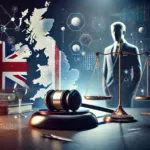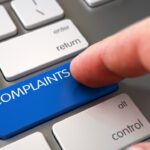Slip and fall accidents can lead to significant injuries and substantial financial burdens. Understanding how insurance companies handle slip and fall claims is crucial for both victims and property owners. This comprehensive guide explores the intricacies of the insurance process, offering clarity and confidence to navigate these challenging situations effectively.
Understanding Slip and Fall Claims
Slip and fall accidents, a subset of premises liability claims, occur when an individual slips, trips, or falls due to hazardous conditions on someone else’s property. Common causes include wet floors, uneven surfaces, poor lighting, and obstructions. These incidents can result in injuries ranging from minor bruises to severe fractures or head trauma.
Key Components of a Slip and Fall Claim
- Duty of Care: Property owners must maintain a safe environment for visitors.
- Breach of Duty: Failure to address or warn about hazards.
- Causation: Direct link between the hazard and the injury.
- Damages: Actual losses suffered, such as medical expenses and lost wages.
Understanding these elements is essential for both claimants and insurance companies when evaluating the validity and extent of a claim.
The Insurance Claims Process
Insurance handling slip and fall claims involves a systematic process designed to assess and address the circumstances surrounding the accident. Here’s a step-by-step overview:
1. Reporting the Incident
The first step is to notify the insurance company promptly. Timely reporting ensures that the claim is processed efficiently and that crucial evidence is preserved. Victims should provide detailed information about the accident, including the time, location, and conditions that led to the fall.
2. Initial Assessment
Upon receiving the claim, the insurance company conducts an initial assessment to determine its validity. This involves reviewing the provided information and identifying any immediate red flags, such as inconsistencies or lack of evidence.
3. Investigation and Evidence Gathering
A thorough investigation is crucial for insurance handling slip and fall claims. Insurance adjusters may:
- Inspect the accident site.
- Interview witnesses.
- Review surveillance footage.
- Obtain medical records.
This evidence helps establish the facts and assess the extent of liability.
4. Liability Assessment
Determining who is at fault is a pivotal aspect of the claims process. The insurance company evaluates whether the property owner met their duty of care and if negligence contributed to the accident. Comparative negligence may be considered if the victim shares some responsibility for the fall.
5. Settlement Negotiation
If liability is established, the insurance company will propose a settlement to cover damages. This negotiation aims to reach a fair compensation without proceeding to litigation. Settlement amounts typically cover medical expenses, lost wages, and pain and suffering.
6. Resolution or Litigation
Most slip and fall claims are settled out of court. However, if parties cannot agree, the case may proceed to litigation, where a court will determine the outcome. Legal representation is often necessary in such scenarios to advocate effectively for the claimant’s rights.
Investigation and Evidence Gathering
Effective insurance handling slip and fall claims relies heavily on meticulous investigation. Insurance companies employ various strategies to gather comprehensive evidence:
Site Inspections
Adjusters visit the accident location to assess potential hazards. They document conditions such as wet floors, inadequate lighting, or structural issues that may have contributed to the fall.
Witness Interviews
Eyewitnesses can provide valuable insights into the circumstances surrounding the accident. Their testimonies help corroborate the claimant’s account and identify contributing factors.
Surveillance Footage
In today’s digital age, many properties are equipped with surveillance cameras. Reviewing footage can reveal critical details about the incident, including the claimant’s actions and the property’s condition at the time of the fall.
Medical Records
Medical documentation substantiates the extent of injuries and associated costs. Insurance companies evaluate these records to determine the validity of claimed damages and the necessity of treatments.
Liability Assessment
Assessing liability is a nuanced process that involves determining the extent to which each party is responsible for the accident. Insurance companies consider several factors:
Comparative Negligence
In some cases, the victim may share partial responsibility for the fall. For instance, if the claimant was not paying attention or was improperly dressed for the environment, their compensation may be adjusted accordingly.
Premises Liability Laws
Laws governing premises liability vary by jurisdiction. Insurance companies must navigate these legal frameworks to assess liability accurately. Understanding local statutes of limitations and duty of care standards is essential.
Contributory Negligence
Some regions adhere to contributory negligence rules, where any fault on the claimant’s part can bar recovery. Insurance companies must be diligent in evaluating all aspects to determine eligibility for compensation.
Settlement Negotiation and Resolution
Negotiating a fair settlement is a critical phase in insurance handling slip and fall claims. Both parties aim to reach an agreement that adequately compensates the victim without necessitating court intervention.
Factors Influencing Settlement Amounts
- Severity of Injuries: More severe injuries typically result in higher compensation.
- Medical Expenses: Coverage includes past and future medical costs related to the injury.
- Lost Wages: Compensation for income lost due to the inability to work.
- Pain and Suffering: Non-economic damages that account for the victim’s discomfort and emotional distress.
Strategies for Effective Negotiation
- Documentation: Comprehensive evidence supports the claimant’s position.
- Legal Representation: Attorneys can negotiate on behalf of claimants, ensuring their rights are protected.
- Realistic Expectations: Understanding the claim’s strengths and weaknesses helps in setting achievable goals.
Common Challenges in Slip and Fall Claims
Navigating slip and fall claims can be fraught with obstacles. Recognizing these challenges can prepare claimants and insurers for potential hurdles.
Disputing Liability
Insurance companies may challenge the claimant’s account, arguing that the property owner was not negligent or that the claimant contributed to the accident.
Insufficient Evidence
A lack of concrete evidence can weaken a claim. Without clear documentation or witness support, proving liability becomes more difficult.
Delayed Reporting
Failing to report the incident promptly can lead to complications, as evidence may deteriorate, and witnesses may become unavailable.
Legal Complexities
Understanding and complying with legal requirements can be daunting, particularly in regions with strict premises liability laws.
Real-World Case Studies
Case Study 1: Supermarket Slip
A customer slipped on a wet floor in a supermarket where no “Wet Floor” sign was displayed. The insurance company conducted a site inspection, interviewed other customers, and reviewed CCTV footage. The evidence confirmed the absence of warning signs, leading to a successful settlement covering medical expenses and lost wages.
Case Study 2: Office Building Fall
An employee tripped over an uneven sidewalk leading to an office building. The property owner argued that proper maintenance records existed, and the sidewalk was in good condition. However, investigation revealed recent construction debris that was not promptly cleared. The insurance company acknowledged partial liability, resulting in a reduced settlement.
These examples illustrate the importance of thorough investigation and evidence in determining the outcome of slip and fall claims.
Frequently Asked Questions
1. What should I do immediately after a slip and fall accident?
Report the incident to the property owner or manager, seek medical attention, document the scene with photos, gather witness information, and notify your insurance company promptly.
2. How long do I have to file a slip and fall claim?
The statute of limitations varies by jurisdiction but typically ranges from one to three years from the date of the accident. It’s essential to consult with a legal professional to ensure timely filing.
3. Can I still receive compensation if I was partially at fault for the fall?
Yes, in comparative negligence jurisdictions, you can receive compensation even if you share some responsibility. However, the amount may be adjusted based on your degree of fault.
4. Do I need a lawyer for a slip and fall claim?
While not mandatory, hiring an attorney can enhance your chances of a fair settlement, especially in complex cases or where liability is disputed.
5. What types of damages can I claim in a slip and fall case?
You can claim medical expenses, lost wages, pain and suffering, rehabilitation costs, and, in some cases, punitive damages.
Key Takeaways
- Timely Reporting: Promptly notifying the relevant parties and your insurance company is crucial.
- Comprehensive Documentation: Collecting detailed evidence strengthens your claim.
- Understanding Liability: Knowing the legal standards and potential shared responsibility is essential.
- Professional Assistance: Legal representation can significantly impact the outcome of your claim.
- Realistic Expectations: Being aware of the factors influencing settlement amounts helps set achievable goals.
Conclusion
Navigating how insurance companies handle slip and fall claims requires a clear understanding of the processes, legal frameworks, and strategies involved. By staying informed and prepared, both victims and property owners can approach these situations with confidence and clarity, ensuring fair and equitable resolutions.
Read More: How to Document Your Slip and Fall Injury Effectively
For more detailed information on premises liability and insurance claims, visit Nolo’s Guide to Premises Liability and the National Association of Insurance Commissioners (NAIC).

Jonathan Hartley is a highly regarded senior criminal lawyer with over 15 years of experience in the UK legal system. He began his career at a prestigious law firm in London, where he specialized in both defense and criminal law. Known for his ability to craft compelling defense strategies, Jonathan has successfully represented clients in high-profile cases and earned multiple awards for his contributions to the field of law.
In addition to his legal practice, Jonathan is also an accomplished legal writer, contributing articles to top legal blogs and online platforms. His work not only provides valuable insights into legal matters but also meets Google’s E-E-A-T standards by delivering accurate, reliable, and trustworthy information to readers. Committed to legal ethics and public welfare, Jonathan actively participates in discussions on law and justice while educating the public through his writing.










